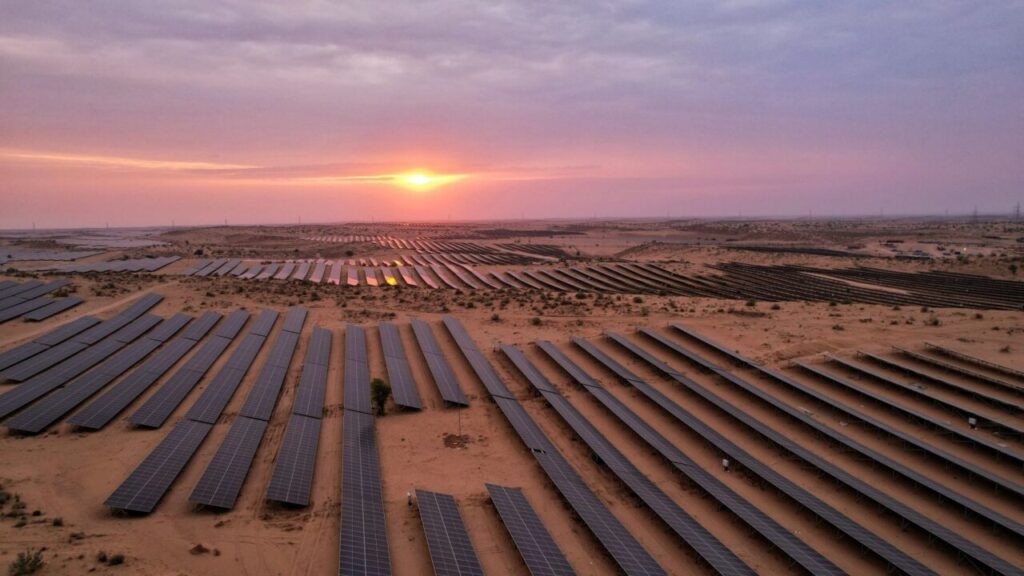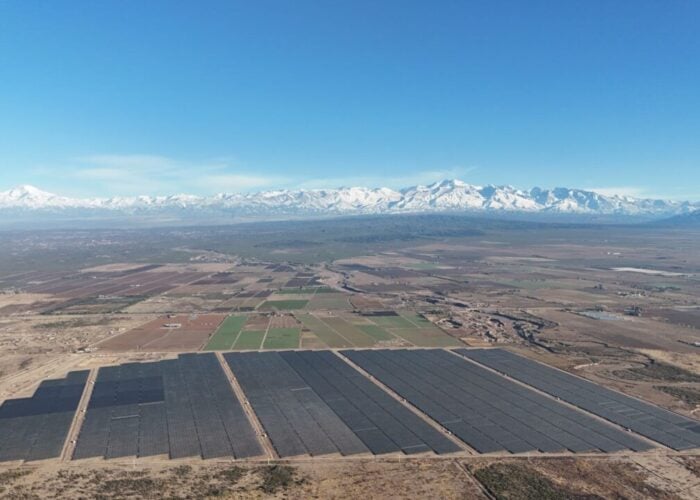
Energy consultancy JMK Research has forecast 28.3GW of utility-scale and rooftop solar PV to be installed in India during fiscal year 2026.
In its latest report, Annual India Solar Report Card – FY2025, JMK Research forecasts that from April 2025 until March 2026, 21.15GW of new utility-scale solar and 7.15GW of rooftop solar PV will be added across India.
Try Premium for just $1
- Full premium access for the first month at only $1
- Converts to an annual rate after 30 days unless cancelled
- Cancel anytime during the trial period
Premium Benefits
- Expert industry analysis and interviews
- Digital access to PV Tech Power journal
- Exclusive event discounts
Or get the full Premium subscription right away
Or continue reading this article for free
This would be an increase of 6GW compared to the installed capacity during FY25, when India added 17.4GW of utility-scale and 5.2GW of rooftop PV. Only taking into account the first three months of 2025 from FY25, India installed 7.8GW of solar PV, according to recent figures from JMK Research.
On the utility-scale front, India had commissioned 85.5GW of solar PV as of the end of March 2025, with a further 68.2GW in the pipeline. By state, Rajasthan, in western India, continues to be the driving force for utility-scale with 26.9GW installed, more than the following two states combined. Gujarat and Karnataka have the second and third most installed utility-scale in India with 12.8GW and 10.6GW, respectively.
However, when combining both the commissioned capacity and the projected pipeline, the ranking changes slightly, as shown in the chart below; hovering over each bar reveals the capacity for each state depending on the status. Rajasthan remains the leading state, with a pipeline of 19.1GW, however the largest share of projects in the pipeline comes from the Interstate Transmission System (ISTS) – which allows projects built in a given state to transmit the power to other states – with 27.9GW.
Chinese manufacturers among leading module sellers
JMK Research’s report also highlighted the leading module manufacturers for the FY25, which was led by Indian solar manufacturer Waaree, which represented a total market share of 13.9%. However, the report does not share how much capacity this represented. More recently, JMK Research published a report that showed that 12.5GW of modules were shipped during the first quarter of 2025, for which Waaree was also the leading manufacturer during that time period.
Despite a basic customs duty (BCD) on solar cells and modules since April 2022, three Chinese solar manufacturers are in the top five for module shipments for the period between April 2024 and March 2025. The companies are JinkoSolar, LONGi and Trinasolar, with Indian solar manufacturer ReNew in the fifth position.
In the past few months, many Indian manufacturers have been adding or announcing new manufacturing capacity, either for wafers, solar cells or modules. Among the companies that recently commissioned capacity was Premier Energies with 1.2GW of new annual nameplate of TOPCon solar cells at its manufacturing plant in Telangana.
Regarding the companies that have exported the most modules outside of India, US thin-film cadmium telluride (CdTe) manufacturer First Solar ended up as the leading company in FY25 with nearly 2GW of modules exported, which represented 66.7% of its production capacity in India. It was followed by Indian manufacturers Adan with more than 1GW (33% of its production) and Waaree with nearly 500MW (6.9%).
Furthermore, in terms of market share for inverter suppliers during FY2025, Chinese company Sungrow is the leading company with 37.6% of market share with a nearly even split between central and string inverters. It is followed by Sineng and TBEA, with a market share of 15.7% and 12.6%, respectively. More than half of central inverters have been supplied by Sungrow between April 2024 and March 2025, while TBEA was the leading company with string inverters with a market share of 23.4%.





